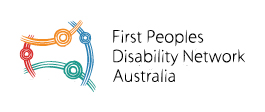When read together with the QuickGuides Aboriginal perspectives on disability and Making a welcoming environment for ATSI members, this information will assist you to set up a peer support networks in the Aboriginal community.
Remember that this is just a guide. As with all guides there will be some that have other opinions.
Avoid assumptions
Sometimes people make assumptions without realising it. It is important to be able to interrogate and be aware our own values, assumptions, beliefs and knowledge. We can then take steps forward with an understanding of where we are starting from.
One good way is to seek information that can build your understanding of Aboriginal culture, history and experiences.
Build your own understanding of Aboriginal culture
There are ways you can build your insight into Aboriginal community experiences. Here are some tips to get you started:
- Learn about your local community’s Indigenous history and heritage.
- Watch Indigenous television programs such as National Indigenous Television Network (NITV).
- Listen to Indigenous radio programs.
- Research through local Aboriginal organisations or local councils for significant events to add to your calendar and program
- Look at a map https://aiatsis.gov.au/explore/articles/aiatsis-map-indigenous-australia
Ask questions
Ask questions* to Aboriginal and Torres Strait Islanders or a trusted community member, such as:
- Whose Country are we on?
- Are there Elders in the community? If so, who are they?
- Who are the other key people in the community?
- What language/s do most people speak? Is there a local interpreter if one is needed?
- What should I be aware of about the community, particularly around relationships?
- What does the community want for its people living with disability.
- What things are working well in the community? What could be improved?
- What are the local protocols for:
- the divide between men’s and women’s business?
- sharing of cultural knowledge?
*Make it a natural conversation where you touch on these points, rather than a conversation that feels like you’re running through a questionnaire. Also, it is important to be aware that some people may not be comfortable or feel they are the ‘right’ person to answer all of these questions. It can be a good idea to ask a number of people these or other questions, so that one person doesn’t feel that they are speaking for the whole community.
Build a partnership
Once you have information and want to take action to set up a peer network, it is important you do this in partnership, so that the peer network is safe, relevant and sustainable from an Aboriginal perspective. Here are some tips for building partnership:
- Make contact with local Aboriginal organisations to find out who the Aboriginal people are in the area, to begin to understand the issues they face. Ways to find local Aboriginal contacts include:
- Searching online
- The phone book
- Aboriginal liaison officers in schools, health services, police, etc
- If you think there is potential for a peer network, the next step is to partner with an Aboriginal organisation or work very closely with people who are trusted in the Aboriginal community
- As you begin to take action, be respectful, useful and act in ways that help to build trust. It may take time for momentum to emerge, so be persistent
- Be prepared to have one conversation with one person at a time
- Working together with Aboriginal stakeholders and agencies means valuing the knowledge, experience and understandings we all bring, and respectfully and openly engaging with each other
- First People’s Disability Network (FPDN) is happy to help with first conversations either via teleconference or sitting down with someone from the peer network and participants as a means of support for both
Make activities culturally competent
Once the peer network begins, it is important it feels familiar and welcoming from an Aboriginal perspective. Here are some tips for running the peer network:
- The peer network should conduct its business “in language” (the first language of local people) or, failing this, have translators or people who can present information in plain, accessible English. It is also important to ensure that any metaphors or examples used take account of Indigenous world views and experiences.
- Wherever possible, involve cultural artefacts (e.g., traditional Indigenous tools, foods, and artwork) in peer network activities.
- Consult and involve family, extended kin networks, and community members in peer network planning and activities.
- Invite Aboriginal Elders to participate in the peer network facilitation
Other helpful information and resources
First People’s Disability Network http://fpdn.org.au
Phone: +61 (2) 9267 4195
Email: enquiries@fpdn.org.au
This guide developed by Aboriginal Services Branch in consultation with the Aboriginal Reference Group for the NSW Department of Community Services in 2009 has some good tips: http://www.carersaustralia.com.au/storage/2011Working%20with%20Aboriginal%20People%20and%20Communities.pdf
This Guide from the Australian Institute of Health and Welfare: Closing the Gap explores the conditions for effective relationships with Aboriginal and Torres Strait Islander communities: http://www.aihw.gov.au/uploadedFiles/ClosingTheGap/Content/Publications/2013/ctgc-ip5.pdf
The Central Land Council website has some good publications on Community development: http://www.clc.org.au/articles/info/community-development
The Reconciliation Australia Share our Pride website has lots of stuff on building respectful relationships: http://www.shareourpride.org.au/sections/respectful-relationships/
This fact sheet is about engaging Aboriginal communities: http://www.inclusionagencynswact.org.au/WWW_NSWIA/files/fd/fd94e369-82a4-43a5-a2f2-d0966b57c137.pdf
This guide looks at connecting to Aboriginal and Torres Strait Islander children and has good practical guidance: https://www.kidsmatter.edu.au/sites/default/files/public/Handbook_engaging_with_web.pdf
Co-authored by First Peoples Disability Network

The information on this page is also available as a downloadable Quick Guide, by clicking below. There are PDF and word versions.
